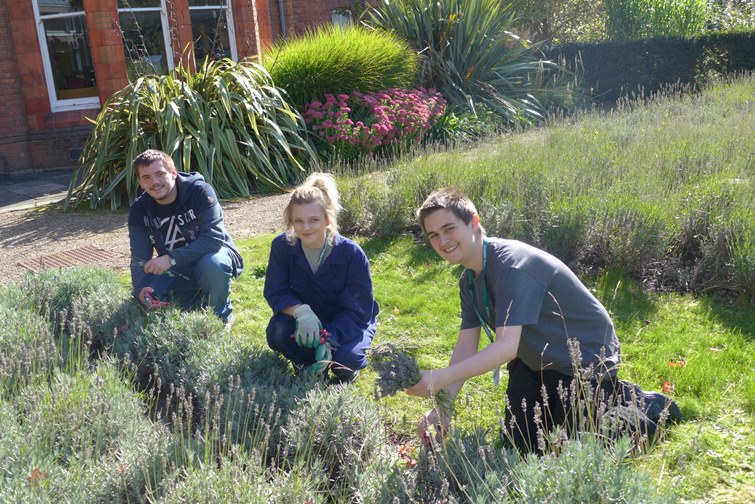Daisy tells us about her work placement at MERL and the benefits of volunteering after university.
The question of what to do with my life after I graduate has been particularly pertinent this week as, on Tuesday, I received the results of my history degree. I got a first, in case you were wondering. Even if you weren’t wondering, I am very pleased to be able to tell you that! Nonetheless, from all the many horror stories I’ve heard, the real world of jobs and careers is a scary place at the moment! So I decided that during my final few weeks in Reading, after the post-exam celebrations calmed down, I would do some work experience that would (hopefully!) help me decide what I want to do in the future.

Daisy researching for the MERL Players
As a history student, the Museums and Heritage sector is an obvious one. I’m fascinated by everything and anything to do with the past and I’ll never turn down the opportunity to work in a beautiful historic building! MERL definitely delivered on both counts. Although the museum itself was closed I could still enjoy the splendour of the Palmer’s entrance hall and got a behind the scenes look at the archives and art collections.
During my week’s work placement I tried out a number of different roles at MERL. I worked on the front desk, welcoming visitors and doing stock checks of the museum shop. I did some research for the MERL Players’ upcoming production (which will look at the lives of different rural residents). My favourite story was of a Land Girl who was a tractor expert but who sometimes found it hard to make the 7.30am start after a night of dancing! I staged a takeover of the MERL volunteer twitter feed, updating followers on what I was up to and giving a behind the scenes insight of MERL and Special Collections. Finally, I transcribed some oral histories of British farming. I enjoyed every role and it was lovely to be able to try out lots of different things. From what colleagues have told me, that’s the joy of a smaller museum – you can mix and match different tasks that interest you and can always find something useful to do! There is something lovely about the atmosphere of a museum, too. While in the office I’ve been shown, and vigorously encouraged to try, hand creams made from Victorian recipes! In the staff room I’ve been part of National Cream Tea day (i.e. eating lots of scones) and have drunk a ridiculous amount of tea!

A snap from Daisy’s archive and library tour
My week at MERL has given me an insight into the world of museums and heritage and, I can confirm, I definitely still want to work in this field! Personally, my dream museum job would be in marketing or PR because I really enjoyed having the opportunity to show MERL off in its best light and thinking of innovative and interesting ways to engage people. However, what MERL has taught me is that I could enjoy almost any role in a museum environment. As long as the people are fun, the tea is flowing and the nerdy history discussions are never far away, I’m happy!
















